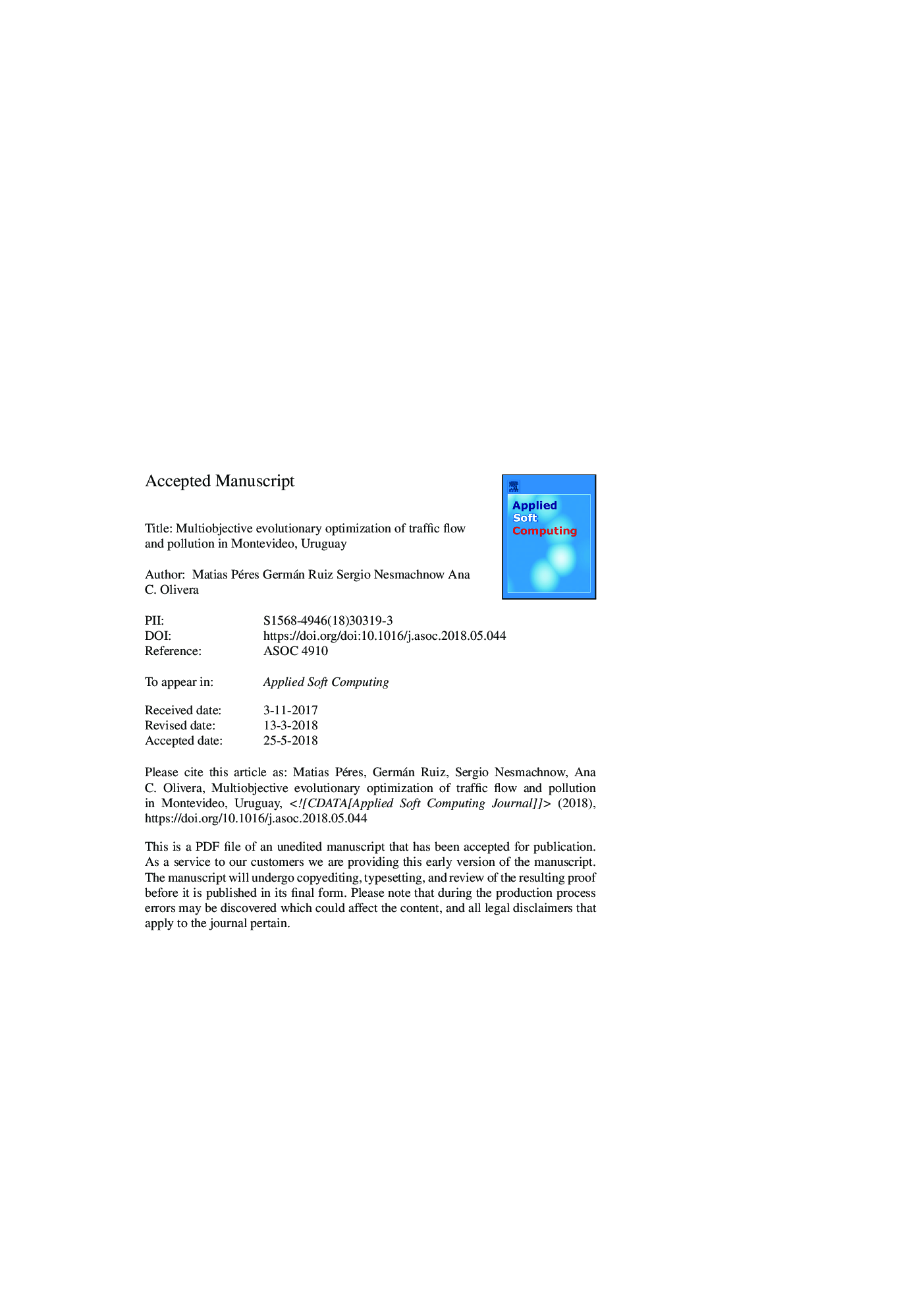| Article ID | Journal | Published Year | Pages | File Type |
|---|---|---|---|---|
| 6903394 | Applied Soft Computing | 2018 | 34 Pages |
Abstract
Traffic congestion and pollution are important problems in modern cities. As improving traffic flow via infrastructure modifications is expensive and intrusive, approaches using simulations emerge as economic alternatives to test different policies, with less negative impact on cities. This article proposes a specific methodology combining simulation and multiobjective evolutionary methods to simultaneously optimize traffic flow and vehicular emissions via traffic lights planning in urban areas. The experimental evaluation is performed over three real areas in Montevideo (Uruguay). Significant improvements on travel times and pollution are reported over the current configuration of traffic lights cycles and also over other traffic regulation techniques. Moreover, the multiobjective approach provides policy-makers with a set of alternatives to choose from, allowing the evaluation of several scenarios and the dynamic modification of traffic light cycles.
Related Topics
Physical Sciences and Engineering
Computer Science
Computer Science Applications
Authors
Matias Péres, Germán Ruiz, Sergio Nesmachnow, Ana C. Olivera,
